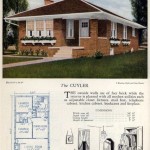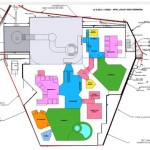Planning Houses in Multiple Occupation (HMOs)
Houses in Multiple Occupation (HMOs) are shared housing units where multiple tenants live together in a single property. HMOs can range from small flats to large houses, and they often cater to students, young professionals, or low-income families. Planning an HMO requires careful consideration of several essential aspects:
1. Legal Considerations
Before obtaining planning permission for an HMO, it's crucial to check local regulations and ensure the property complies with building codes and safety standards. Different types of HMOs may have specific requirements, such as:
- Number of occupants per room
- Kitchen and bathroom facilities
- Fire safety measures
2. Market Research
Conduct thorough market research to identify potential tenants, their needs, and the rental market in the area. Analyze the competition, rent prices, and amenities offered by other HMOs to determine your target market and competitive advantage.
3. Property Layout
Design the HMO layout to maximize space and functionality while adhering to legal requirements. Consider the number of bedrooms, bathrooms, common areas, and storage spaces. Ensure adequate lighting, ventilation, and natural light.
4. Tenancy Agreement
Draft a comprehensive tenancy agreement that outlines the terms of the tenancy, including rent, utilities, responsibilities, and house rules. Clearly define the roles and expectations of the landlord and tenants to avoid disputes.
5. Management Plan
Establish a clear management plan to ensure the smooth operation of the HMO. This includes procedures for rent collection, maintenance, repairs, and tenant relations. Consider hiring a property manager to handle these tasks if necessary.
6. Financial Planning
Develop a detailed financial plan that anticipates the costs and income associated with the HMO. Calculate mortgage payments, taxes, insurance, utilities, and maintenance expenses. Set realistic rent prices to generate sufficient revenue while ensuring the property remains attractive to tenants.
7. Tenant Screening
Implement a thorough tenant screening process to select responsible and reliable tenants. Verify references, conduct credit checks, and consider guarantors if necessary. Maintain open communication with tenants to foster a positive landlord-tenant relationship.
8. Safety and Security
Prioritize the safety and security of your tenants by installing appropriate security measures such as smoke and carbon monoxide detectors, fire extinguishers, and deadbolts. Consider providing secure storage for valuables and common areas for socializing.
9. Ongoing Maintenance
Regularly inspect the property to ensure it is well-maintained and up to code. Address maintenance issues promptly to prevent costly repairs and maintain the property's value. Establish clear procedures for reporting and resolving maintenance requests.
10. Legal Compliance
Stay updated on all relevant laws and regulations pertaining to HMOs. Obtain necessary licenses and permits, and comply with health and safety standards, fire regulations, and any other applicable requirements.

Should You Convert Your Property To A House Of Multiple Occupation Blog

House In Multiple Occupation Hmo Regulations

Houses Of Multiple Occupation Planning Permission

Planning And Licences For Houses Of Multiple Occupancy Hmo

House In Multiple Occupation Wikipedia

A Practical Guide To Houses In Multiple Occupation Hmos

Everything You Need To Know About Hmo Licensing Foxtons

Do I Need Planning Permission For A House In Multiple Occupations Hmo

House In Multiple Occupancy Hmo Guide Arthur

New Houses In Multiple Occupation To Require Planning Permission Falmouth Stephens Scown








